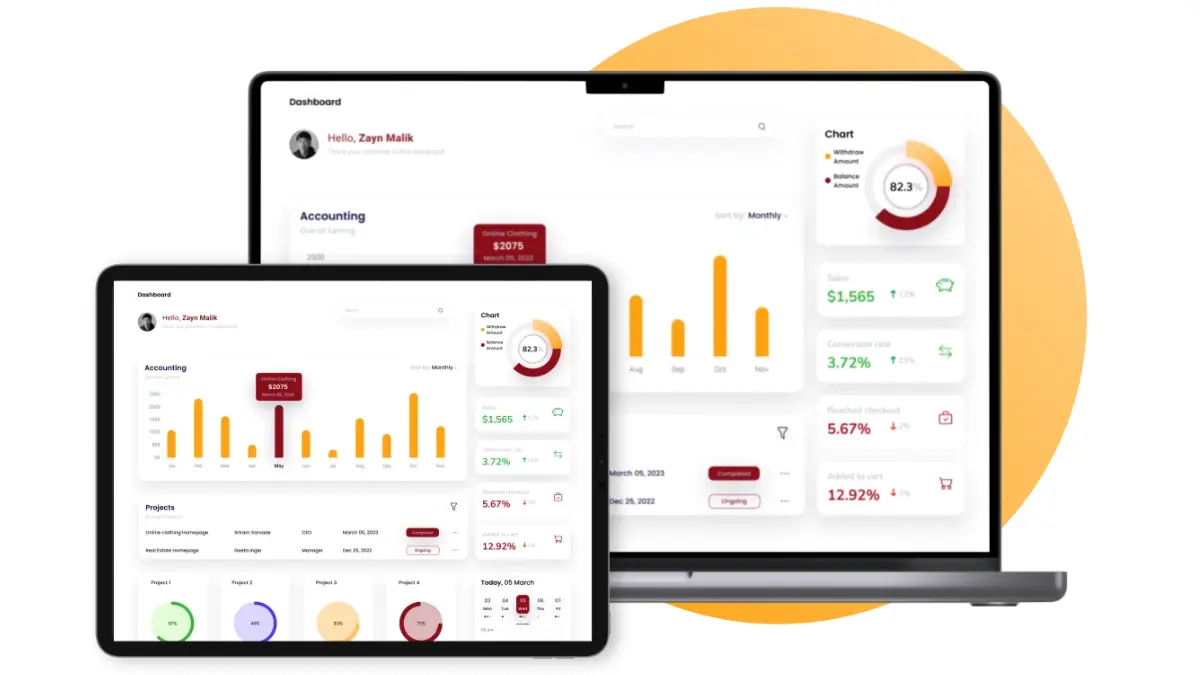Controlling costs is a critical priority for any business aiming to remain competitive. One area often overlooked in cost-saving strategies is addressable spend—the portion of company expenses that can be influenced through better procurement decisions.
However, companies often face challenges such as data inaccuracy and inconsistent information, which can hinder spending visibility and limit the ability to identify cost-saving opportunities. Additionally, dealing with too many suppliers often complicates procurement processes and reduces the potential for volume discounts.
Nevertheless, the right software solutions can mitigate these issues. A KPMG report emphasizes that organizations can achieve significant cost reductions by enhancing the visibility of their spending data. Companies can effectively identify opportunities to reduce overall spending without compromising quality by implementing structured procurement processes and technology solutions.
Understanding the concept of addressable spending is crucial to unlocking its full potential. This comprehensive guide will explore practical steps to optimize addressable spending, ensuring your business remains agile in cost management.

Key Takeaways
|
What is Addressable Spend?
Addressable spend is the part of business expenses, including inventory purchases, that procurement can control. It can be analyzed to cut costs and enhance quality through strategic sourcing and better procurement processes, often referred to as “spend under management.”
This spending under management is critical for procurement professionals because it represents a pivotal opportunity to drive cost savings and improve supplier relationships. By focusing on addressable spending, companies can implement strategies like supplier consolidation, contract negotiations, and strategic sourcing.
Understanding and optimizing addressable spend is essential for shaping a strong procurement strategy. It enhances supplier management, supports cost-reduction efforts, and contributes to the company’s profitability.
Why is Addressable Spend Important?

Addressable spend is crucial because it allows businesses to apply proven procurement strategies to reduce costs and enhance product quality. By focusing on this area, companies can improve their gross margin and gain a more decisive competitive advantage in the market.
In addition, leveraging tools like procurement software can streamline processes and make it easier to manage addressable spend efficiently. This reduces financing costs and ensures that procurement decisions directly contribute to profitability and long-term success.
Key Benefits of Optimizing Addressable Spend

Tackling addressable spending offers businesses many benefits beyond simple cost savings. By gaining better visibility and control over procurement, companies can significantly enhance operational efficiency and strengthen their financial standing.
Additionally, optimizing addressable spend fosters stronger supplier relationships and reduces unnecessary administrative burdens, all contributing to long-term growth and profitability.
1. Increased visibility
When contracts are well-organized and negotiated, your company gains complete visibility into its spending. This helps you understand every dollar spent in procurement and make more informed, data-driven purchasing decisions.
Improved visibility reduces risk, minimizes maverick spending, and boosts vendor contract performance. Ultimately, this allows for better control and efficiency in your procurement process, setting a solid foundation for your procurement system.
2. Lower costs
Negotiating contracts and aligning spending with your procurement goals leads to significant cost savings. Addressing addressable spend during contract renewals opens opportunities to cut costs and secure better terms for essential supplies.
It also identifies areas where unnecessary spending can be minimized, improving budget management. By tackling these areas strategically, your organization can make every dollar count.
To achieve these benefits and enhance budget management, consider HashMicro’s procurement solution. Sign up for a free demo with the vendor’s team of professionals today!
3. Stronger cash position
Managing more spending within the procurement function strengthens your organization’s financial standing. This increased spending under management boosts your buying power, enabling faster market entry and more investment opportunities.
It also provides leverage when seeking financing, giving your business a solid foundation for future growth. A well-optimized procurement strategy contributes directly to long-term financial health.
4. Better supplier relationships
When you tackle addressable spending, you naturally build stronger, more collaborative relationships with your suppliers. These relationships ensure better pricing and reliable support when issues arise.
Fostering long-term partnerships benefits your organization by improving vendor performance and mutual trust. Strong supplier relationships are crucial to achieving a more resilient and efficient procurement system.
5. Fewer invoices
Addressing spend often leads to consolidated vendor relationships, meaning fewer suppliers manage a more significant portion of your needs. This consolidation results in fewer invoices, streamlining your procurement process and reducing administrative burdens.
By simplifying spend management, your organization can focus more on strategic activities, ultimately improving overall operational efficiency.
Effective Strategies for Optimizing Addressable Spend

Addressable spending can be a powerful tool for improving procurement efficiency, but only when strategically approached. Companies can unlock significant cost savings and operational benefits by implementing critical practices such as supplier consolidation and contract renegotiation.
To maximize these advantages, businesses should follow proven strategic tips that ensure their addressable spend is fully optimized and aligned with broader financial goals.
1. Set clear, measurable goals for addressable spend optimization: Develop precise and actionable targets that align with your procurement strategy. Establish quantifiable objectives that promote accountability and drive the optimization of managed spending.
2. Foster internal solid communication to ensure stakeholder support: Engage employees and stakeholders through clear communication about the benefits of your spending strategy. Building consensus is critical to achieving successful implementation.
3. Leverage advanced procurement automation tools: Invest in or enhance procurement software to automate processes, track spending, and uncover cost-saving opportunities. The right tools can significantly improve operational efficiency.
4. Benchmark against industry standards to stay competitive: Regularly compare your procurement practices with industry benchmarks. Adopting best practices helps you maintain a competitive edge and improve cost control.
5. Conduct comprehensive spend analysis for greater efficiency: Analyze your addressable spend to identify cost-saving opportunities. A detailed spending analysis is essential for optimizing budget management and improving financial performance.
6. Continuously evaluate and improve supplier performance: Regular assessments of supplier performance ensure that you receive maximum value. Adjustments can be made as needed to maintain quality and enhance partnerships.
7. Enhance strategic sourcing for long-term value: Focus on strategic sourcing to build stronger supplier relationships and secure better deals. Long-term partnerships contribute to cost reduction and greater procurement control.
8. Consolidate suppliers and orders for volume discounts: Reducing the number of vendors and consolidating orders can unlock substantial savings. Bulk purchasing often leads to higher volume discounts, optimizing procurement costs.
9. Review and renegotiate contracts to stay competitive: Review supplier contracts regularly to stay informed of market trends and maintain competitive pricing. Renegotiating terms ensures ongoing financial optimization.
10. Analyze data to identify and resolve quality issues: Utilize data analytics to pinpoint and resolve supplier quality concerns. This proactive approach helps maintain high standards and reduce unnecessary expenses.
11. Control maverick spending to ensure procurement alignment: Enforce stricter controls to address unauthorized purchases. This ensures all expenditures align with your procurement strategy, preventing cost overruns.
12. Track KPIs to measure the success of your spending strategy: Monitor key performance indicators (KPIs) to evaluate progress toward addressable spending goals. Regular reviews allow for necessary adjustments and ensure ongoing success.
To implement these tips efficiently, you may have considered using the best software to help automate processes with the right Procurement ERP software. You can consider the pricing offered by HashMicro by clicking the banner below!
How to Calculate Addressable Spend
The formula to calculate addressable spending is:

To calculate it, divide the addressable expenditures by your total business expenditures and express them as percentages. For example, if your total spend is $1 million and the addressable spend is $770,000, your addressable spend percentage is 77%.
Tracking this percentage over time is essential for effective spend management. By calculating addressable spending on a trailing 12-month basis, significantly, if your spending fluctuates, you gain a clearer picture of procurement efficiency and cost savings.
Optimise Addressable Spend with HashMicro’s Procurement Software Solution

HashMicro’s Procurement Management Software is one of the best solutions for optimizing addressable spend in procurement management. Its advanced features help businesses control costs and improve procurement efficiency with ease.
If you want to learn more about this solution, you can try the free demo and consultation with HashMicro’s professional teams. This will give you firsthand experience of how the system can streamline your procurement processes.
HashMicro provides a comprehensive range of features for automated procurement workflows, such as:
- PO, RFQ, and PR Management: Manage purchase orders (PO), requests for quotation (RFQ), and purchase requisitions (PR) seamlessly to streamline procurement workflows. This feature enhances department communication, ensuring faster and more accurate purchasing decisions.
- PR Approval Management: Automate and easily manage purchase requisition (PR) approvals to improve efficiency and reduce delays. This feature ensures compliance with procurement policies while speeding up the approval process.
- Online Portal for Suppliers: Provide suppliers with an online portal to simplify communication and collaboration. Suppliers can easily track orders, submit quotations, and manage contracts in real-time, improving overall vendor relationships.
- Vendor/Supplier Rating: Evaluate and rate suppliers based on performance to ensure quality and reliability. Use this feature to make informed decisions and maintain high procurement standards.
- Blanket Order Management: Manage long-term agreements with suppliers through blanket orders to secure better pricing and ensure consistent supply. This feature helps streamline reordering processes and reduces administrative burden.
- Landed Cost Calculation: Calculate the total cost of products, including shipping, taxes, and duties, for more accurate budgeting. This feature enables better cost control and more informed purchasing decisions.
- Integration with Other Systems and Apps: Integrate seamlessly with other systems and apps to create a unified, efficient procurement ecosystem. This feature enhances collaboration across departments and ensures data consistency throughout your business.
In addition to these features, HashMicro offers seamless integration with third-party systems and flexibility in customizing features to meet the complex needs of your business. This ensures a tailored solution that enhances both efficiency and control.
Conclusion
Optimizing addressable spending is crucial for businesses aiming to reduce costs, improve supplier relationships, and enhance overall procurement efficiency. By taking a strategic approach, companies can make informed decisions directly impacting their profitability and growth.
One of the best solutions for managing addressable spend is HashMicro’s Procurement Management Software. Its comprehensive features and automation capabilities streamline procurement processes, allowing businesses to gain complete control over their expenditures.
To experience the benefits firsthand, we invite you to try HashMicro’s Procurement Management System with a free demo today.

FAQ About Addressable Spend
-
What is addressable vs non-addressable spend?
Nonaddressable spend usually covers employee salaries, expense reimbursements, taxes, and other mandatory payments that cannot be managed under procurement oversight. In contrast, addressable spend is the total amount that could potentially gain from procurement management and control.
-
How to define addressable spend?
Addressable spend refers to the portion of business expenses, such as inventory purchases, that procurement can control. By identifying and analyzing this spend, businesses can optimize costs and enhance quality through improved strategic sourcing and procurement methods, known as spend under management.
-
What is the addressable market spend?
Total addressable market represents the highest revenue a business can achieve by offering its product or service within a particular market. It helps businesses objectively assess a market’s growth potential and provides insights into achieving product-market fit.
-
Is managed spend the same as addressable spend?
All Spend Under Management falls within Addressable Spend, but not all Addressable Spend is managed yet. The primary aim of procurement is to increase the share of Addressable Spend under management, leading to greater cost savings and improved spending efficiency.













